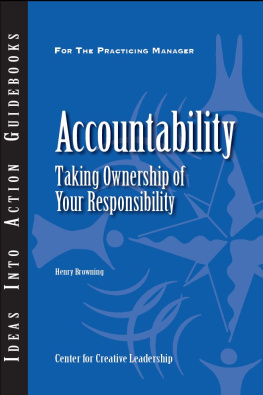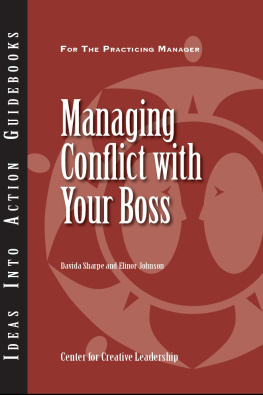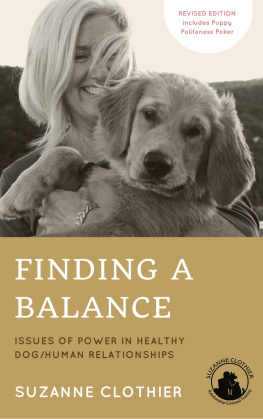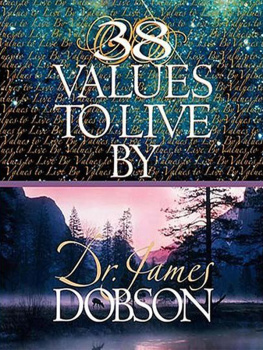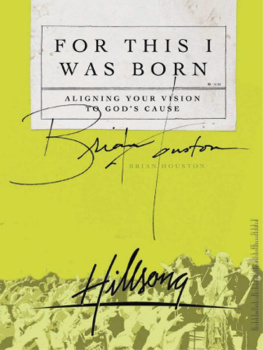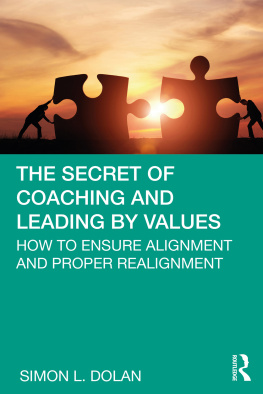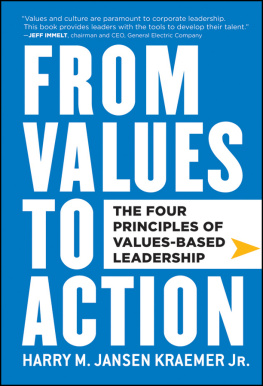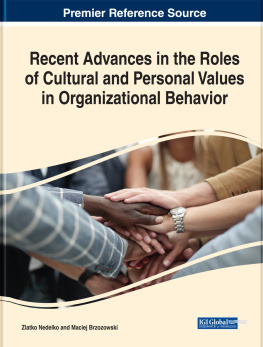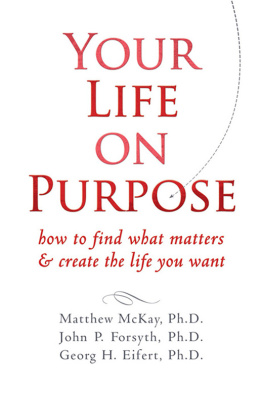Ideas into Action Guidebooks
Aimed at managers and executives who are concerned with their own and others development, each guidebook in this series gives specific advice on how to complete a developmental task or solve a leadership problem.
| LEAD CONTRIBUTORS | Joan Gurvis
Gordon Patterson |
| CONTRIBUTORS | Patricia J. Ohlott |
| GUIDEBOOK ADVISORY GROUP | Victoria A. Guthrie
Cynthia D. McCauley
Ellen Van Velsor |
| DIRECTOR OF PUBLICATION | Martin Wilcox |
| EDITOR | Peter Scisco |
| ASSOCIATE EDITOR | Karen Mayworth |
| DESIGN AND LAYOUT | Joanne Ferguson |
| CONTRIBUTIN ARTISTS | Laura J. Gibson
Chris Wilson, 29 & Company |
Copyright 2004 Center for Creative Leadership.
All Rights Reserved. No part of this publication may be reproduced, stored in a retrieval system, or transmitted, in any form or by any means, electronic, mechanical, photocopying, recording, or otherwise, without the prior written permission of the publisher. Printed in the United States of America.
CCL No. 427
ISBN No. 1-882197-87-9
Center for Creative Leadership
Post Office Box 26300
Greensboro, North Carolina 27438-6300
336-288-7210
www.ccl.org/publications
pfeiffer.com/go/cclguidebooks

The Ideas into Action Guidebook Series
This series of guidebooks draws on the practical knowledge that the Center for Creative Leadership (CCL) has generated in the course of more than thirty years of research and educational activity conducted in partnership with hundreds of thousands of managers and executives. Much of this knowledge is sharedin a way that is distinct from the typical university department, professional association, or consultancy. CCL is not simply a collection of individual experts, although the individual credentials of its staff are impressive; rather it is a community, with its members holding certain principles in common and working together to understand and generate practical responses to todays leadership and organizational challenges.
The purpose of the series is to provide managers with specific advice on how to complete a developmental task or solve a leadership challenge. In doing that, the series carries out CCLs mission to advance the understanding, practice, and development of leadership for the benefit of society worldwide. We think you will find the Ideas Into Action Guidebooks an important addition to your leadership toolkit.
Executive Brief
Balance isnt an issue of time, but an issue of choice. Its about living your values by aligning your behavior with what you believe is really important.
Aligning your behavior with your values is much like any other developmental experience; the basic process involves assessment, challenge, and support. You need to determine where you are, define where you want to go, and then put into place the tools you need to get there.
Balance is about more than how you spend your time. Its about how you live your life. Its about recognizing that you have control over the choices you make and aligning your behavior with your values.
Balancing Act
People often define work-life balance as having equal or sufficient time for all they want to experience: career, family, friends, community, and leisure pursuits. Searching for the point of equilibrium or balance can become all-consuming and nonproductive.
But take a different lookone that says balance isnt an issue of time, but an issue of choice. You choose how to use your resourceswhat to do with your time, energy, and passion. Balance is more than an assessment of where and how you spend your time. Its about living your values by aligning your behavior your choices and actionswith what you believe is really important.
A useful metaphor to keep in mind is a balance ballthe kind used for exercise and yoga. It looks as if it would be easy to sit on a balance ball, lift your feet off the floor, and balance your body. But the first few attempts are usually comical, if not disastrous. Success depends on a combination of purpose, practice, and patience. Eventually, you get a feeling of being centered. With attentive practice, you will be able to find your balance easily without having to think about your position or each move. It becomes a natural act.
Achieving balance or being centered in your life works in much the same way. Being in alignment or centered in life is about making clear choices that support your core values. The act of aligning your values and your life choices will achieve the same results as being centered on the balance ball. Doing so implies a dynamic process, just like sitting on the ball. You must constantly reassess your life, your challenges, and the consequences of your choices.
Values are the beliefs or feelings that are important enough to drive our decisions about how we behave. For one person, creativity, following a passion, and self-renewal can be major values. For another, knowledge, discovery, and intellectual curiosity can be drivers. For yet another, the attainment of material wealth, power, and status are key motivators of behavior. This is not to say that one is necessarily better than another; there are often no right or wrong answers, no absolutes. Our values shift during the course of our lives. Accordingly, so do the choices that flow from our different values. When our lives dont reflect the satisfaction of our values, we feel that inconsistency as some measure of imbalance.
Aligning your behavior with your values is much like any other developmental experience; the basic process involves assessment, challenge, and support. You need to determine where you are, define where you want to go, and then put into place the tools you need to get there.
Ann, a successful marketing manager, and her husband, Don, have two children under the age of five. Both Ann and Don are successful in their work, but Ann holds a senior position and earns significantly more than Don. They both travel a fair amount and rely on family and babysitters to help them. Each weekend, they sit down and plan their schedules for the week, determining who will run errands and pick up the children after preschool. Ann is grateful for Dons support. Things run smoothly most of the time, but she finds herself getting up before dawn to do e-mail and staying up late in the evening to finish household chores. She frequently admits that she misses spending quality time with her children. They could live on her salary alone, but they have recently purchased a vacation home and two new cars. With college and retirement ahead, neither Ann nor Don wants to live on one paycheck.
Assessment: Gaining Clarity
Assessment helps you understand and gain clarity about your current situation so that you can identify the gaps between your present reality (where you are) and the future (where you want to be). Assessment provides you with information, which helps unfreeze your perspective, and results in a heightened awareness of yourself and understanding how others see you. A thorough assessment process becomes the map to help you move over the terrain and face the challenges that lie ahead. It is the process by which you develop new skills and perspectives that will help you become more effective in all aspects of your life.
Time Journal
There are many ways to assess whether your values and behavior are aligned. One simple form of assessment is to inventory how you spend your time. Keep a log for a full week or two and jot down what you do for any period of time of an hour or more. Some themes or categories will emerge: career, family, community, health, self, spiritual pursuits, and so on. As a second step, write down why you did what you did. What value was being served? Next, consider the following questions:


